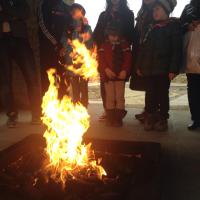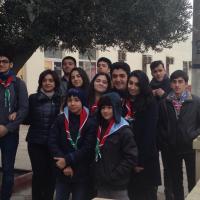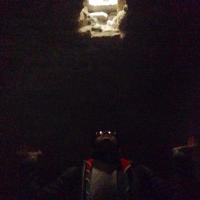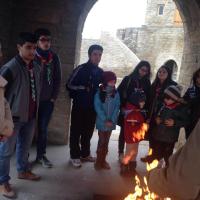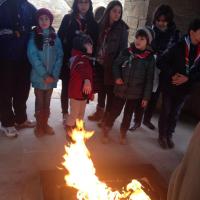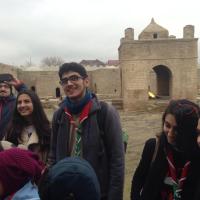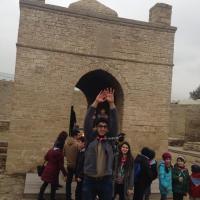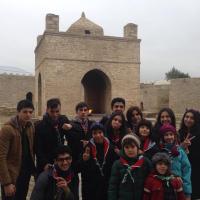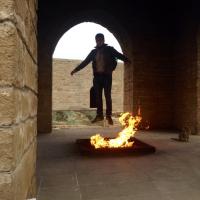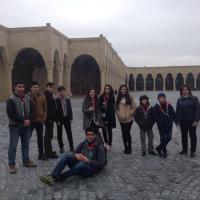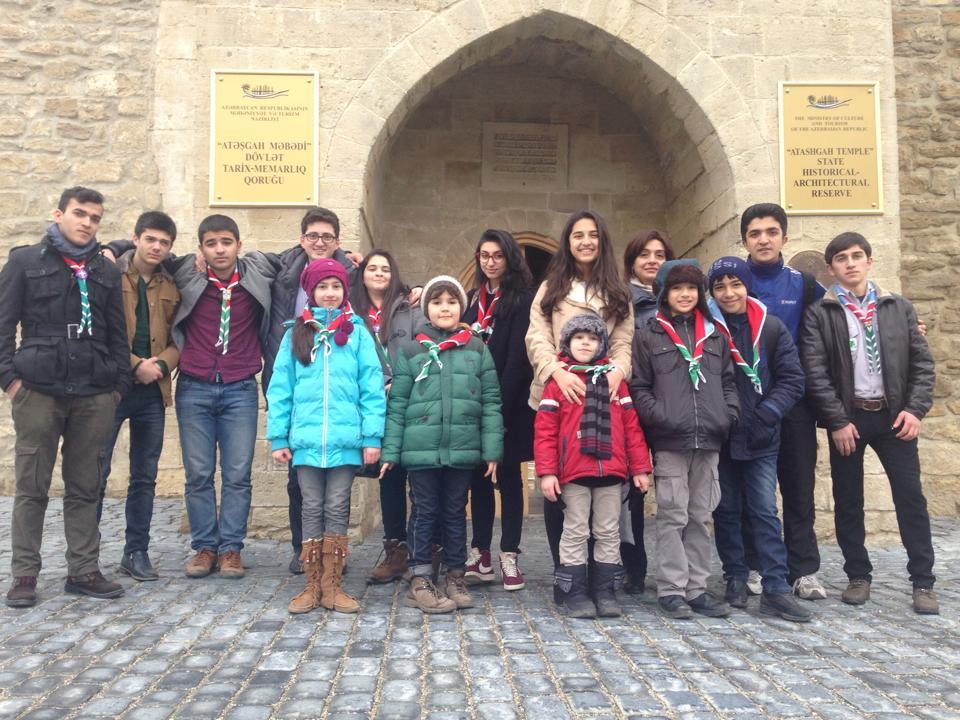
Baku scouts have marched "Ateshgah"
Baku scouts have marched from Koroglu subway to "Ateshgah" with scout uniforms ,on 15 February.
They acquainted with historical monuments.
The Baku Ateshgah (from Persian: آتشگاه Atashgāh, Azerbaijani: Atəşgah) or "Fire Temple" is an ancient Hindu castle-like religious temple dedicated to Jwala Ji in Surakhani, a suburb of greater Baku, Azerbaijan, which was initially recognized as a Zoroastrian fire worship place. "Atash" (آتش) is the Persian word for fire.The pentagonal complex, which has a courtyard surrounded by cells for monks and a tetrapillar-altar in the middle, was built during the 17th and 18th centuries. It was abandoned after 1883[citation needed] when oil and gas plants were established in the vicinity, ending the flow of natural gas to the temple and extinguishing the holy fire.
The Baku Ateshgah was a pilgrimage and philosophical centers of fire worshipers from Multan (now located in Pakistan), who were involved in trade with the Caspian area via the famous "Grand Trunk Road". The four holy elements of their belief were: ateshi (fire), badi (air), abi (water), and heki (earth). The temple ceased to be a place of worship after 1883 with the installation of petroleum plants (industry) at Surakhany. The complex was turned into a museum in 1975. The annual number of visitors to the museum is 15,000.
The Temple of Fire "Ateshgah" was nominated for List of World Heritage Sites, UNESCO in 1998 by Gulnara Mehmandarova— president of Azerbaijan Committee of ICOMOS—International Council on Monuments and Sites . It was also featured on an episode of Globe Trekker.
It was declared a state historical-architectural reserve by decree of the President of Azerbaijan on 19 December 2007.

